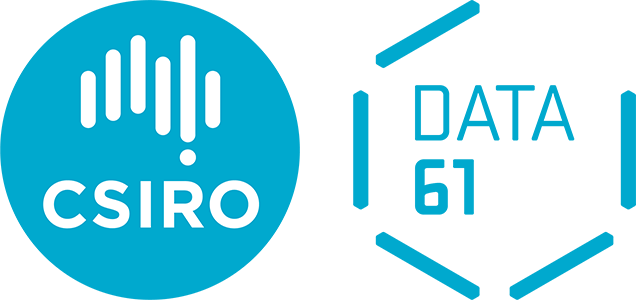On-demand Public Transport

The bus-stops assigned to different hubs (shown as + symbols) in a five-hub solution for Canberra, ACT. This solution gives a good trade-off between travel time for customers and bus operating costs. The bus trunk route is also shown.
The lower customer demand at weekends and at night means that off-peak public transport is often slow and inconvenient. But public transport is important for people to engage in work, social and sporting activities. Dr. Phil Killby explained in his interview with The Canberra Times, the scope and benefits to improve on off-peak public transport for Canberra. This project is named as Busplus. The aims of the project is to design and prototype a more effective and efficient off-peak public transport for Canberra. However, it is applicable in a large number of low-density cities (and even low-density suburbs of high-density cities).
CSIRO’s solution is a ‘hub-and-shuttle’ system that combines buses and multi-hire taxis. The idea is to replace many low-frequency, fixed-schedule services with a multi-modal bus/taxi combination. The buses run a high-frequency, fixed schedule service through a number of hub nodes, while multi-hire taxis shuttle passengers between their local bus stop and their nearest hub. Customers book 15 minutes ahead of desired departure, via a call centre or web app. A potentially shared taxi takes them from their local bus stop to the nearest hub. From there (if needed), they can take a bus to another hub. If needed, a final (shared) taxi trip completes the journey. The main advantage of the system is short travel times regardless of the origin and destination. Simulations in Canberra showed that the cost of taxis is largely offset by the savings in the cost of buses.
The system at a glance
The main features of the proposed system are:
- Book and pay for service beforehand, using a phone app, web site or call centre.
- A single ticket covers all taxi and bus legs.
- Bus-stop to bus-stop service. Passengers a picked up at a bus stop, and dropped off at a bus stop, just like the current fixed-schedule service.
- Buses run between “hub” nodes. A high-frequency service (every 10-15 minutes) is offered between hubs. In Canberra, the hub nodes will may be busy areas such as Civic, Woden, Belconnen, Tuggeranong, Gungahlin and Kingston.
- Taxis used as shuttles. Taxis take passengers from their local bus stop to a hub. On the return, passengers are picked up at the hub and taken to their local stop.
- Multi-hire taxis. Taxis may deviate on the trip to pick up or drop off another passenger. Up to three passengers will share a taxi
- Taxis are called into service when required, and released when demand drops off.
- Taxis are paid at or near their usual rate.
The vision
ICT-enabled, smart public transport for Canberra.
The project aims to realise several benefits
- Improved off-peak service. Rather than waiting up to an hour, we aim to have customers on a bus within 10-20 minutes of calling
- Good service regardless of your origin and destination. Services are not locked into radial pattern of typical scheduled services.
- Reduced costs. By removing buses with few customers, we hope to make significant savings. Since taxis will only be paid when they are required, the differential should be in our favour.
- Improve social equity. Currently people without a car are severely disadvantaged in looking for work outside a Monday to Friday, 9 to 5 standard day. Travelling long distances to work on a weekend can require very long travel times. We hope to remove this barrier.
- Environmental benefits. If off-peak public transport were improved, many people in Canberra would have reduced need for a second car, or even do without a car altogether. This would have benefits in terms of reduced car usage.
- Reduced CO2 emissions. By taking buses off the road, and replacing them with more fuel-efficient cars, total CO2 will be reduced
